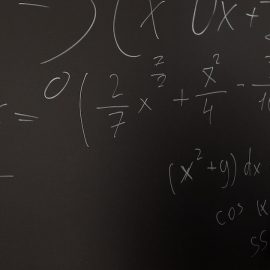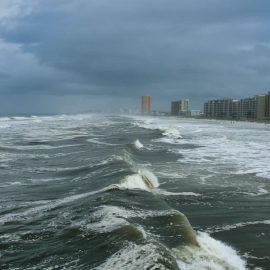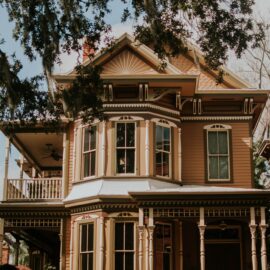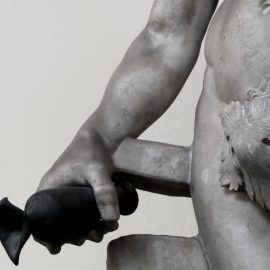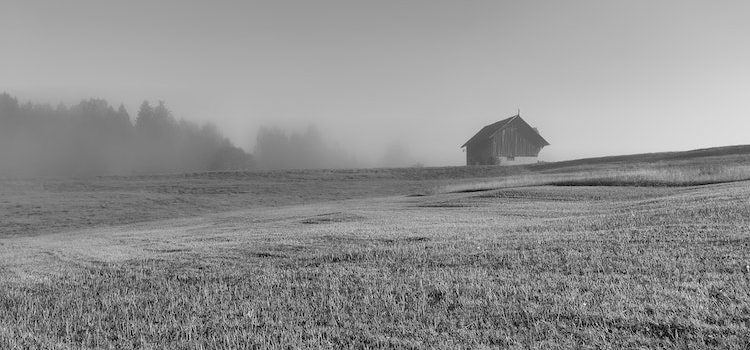
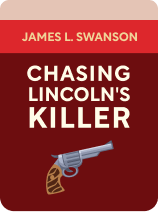
This article is an excerpt from the Shortform book guide to "Chasing Lincoln's Killer" by James L. Swanson. Shortform has the world's best summaries and analyses of books you should be reading.
Like this article? Sign up for a free trial here .
How did the hunt for John Wilkes Booth and his co-conspirators unfold? What was the ultimate fate of the assassins?
The hunt for John Wilkes Booth and his accomplices lasted for several days after the assassination of Lincoln. Chasing Lincoln’s Killers tells the chilling tale of the assassins and the sympathizers who helped them flee from Washington, through Maryland, and ultimately to Virginia.
Read more to learn the exciting story of the hunt for John Wilkes Booth.
The Hunt for John Wilkes Booth and His Co-Conspirators
At 7:22 a.m. on April 15, at the boarding house across from Ford’s Theatre, Lincoln died and Stanton sent a telegram announcing the news to the nation. The president’s body was placed in a simple pine coffin, and soldiers escorted it to the Executive Mansion. At 11 a.m, Vice President Johnson was sworn in as president.
Meanwhile, Stanton escalated the investigation and the hunt for John Wilkes Booth and his co-conspirators, calling in troops and police from as far away as New York City. They had numerous pieces of evidence from searching Booth’s room, including letters with the names of associates, but they were also distracted by false sightings and leads.
April 15
Atzerodt: Azerodt left his hotel room and walked to Georgetown, on his way to his cousin’s in Maryland. In Georgetown, he stopped at a store, got a $10 loan by using his pistol as collateral, and continued on.
Booth and Herold: Booth and Herold rested at Mudd’s farm during the day and planned to continue south at nightfall. When Mudd went to town for supplies, he learned that Lincoln had been shot and cavalry troops were searching the countryside in the hunt for John Wilkes Booth and other associates. A patrol coming from Washington rode past his farm that day but didn’t stop. Afraid and angry that Booth had involved him in the assassination plot, Mudd returned to his farm at 6 p.m. and ordered Booth and Herold to leave.
However, Mudd agreed that if questioned by troops, he’d say only that he’d provided medical aid to two strangers who stopped briefly at his farm, then he’d send the troops in the wrong direction. The doctor also provided Booth and Herold with the names of two local Confederate operatives and directions for connecting with them near the Potomac River, which they would then cross to Virginia. Finally, he passed on the name of a doctor in Virginia. After getting lost, Booth and Herold finally connected late at night with one of the operatives, Captain Samuel Cox, at his farm near the river.
April 16 (Easter Sunday)
Booth and Herold: As Easter dawned, Cox sent the fugitives to a nearby wooded area to hide until nightfall, while he summoned a Confederate secret service veteran, Thomas Jones, who could ferry them across the river. Jones had run a clandestine ferry service between Maryland and Virginia during the war, and he was excited to assist Lincoln’s assassin.
Jones visited Booth and Herold in the woods and persuaded them to stay hidden until troops had moved through the area. He would bring them food and newspapers requested by Booth and would decide the best time to cross the river.
Atzerodt: On Easter morning, Azerodt arrived at his cousin’s home 22 miles south of Washington in Montgomery County, Maryland. The cousins and other guests joked that Azerodt could be the man who killed Lincoln, and Azerodt stupidly joked that he was. Further, he confirmed the news of the attack on Seward. He then traveled farther south to another cousin’s residence. Meanwhile, a suspicious guest at the earlier stop reported him to authorities.
Mudd: Mudd continued to worry about being questioned by troops. In an attempt to make it look like he was a good citizen and absolve himself of responsibility, he sent a cousin to give cavalry officers a vague report that two strangers had stopped at Mudd’s farm and he’d given medical aid. His cousin was slow in delivering the report, and the officers were slow in checking it out.
April 17-18
Powell and Mary Surratt: In Washington, Stanton’s investigators suspected that John Surratt was Seward’s attacker because of his association with Booth, although they had no evidence. As they questioned Mary Surratt at her boarding house, Powell rang the doorbell.
Powell was surprised to find soldiers inside and when they asked his business, he said he was there to dig a ditch for Mary Surratt—however, she refused to confirm the story, saying she didn’t know him. Powell surrendered and soldiers arrested him, Mary Surratt, and everyone else at the boarding house. Searching the house, investigators found photos and documents, including a photo of Booth hidden behind a picture frame, connecting the occupants to the Confederate cause.
Under questioning at headquarters, Mary Surratt admitted only the facts she knew the investigators likely had from other sources. She lied in saying she didn’t know Powell, but acknowledged knowing George Atzerodt, whose name had been found in Booth’s room. She provided no clues to Booth’s whereabouts. Investigators arrested and jailed Surratt and Powell, along with several Booth associates who had nothing to do with the assassination. They even arrested the theater employee who’d unwittingly held Booth’s horse, among more than 100 suspects.
Booth and Herold: On April 18, Jones visited Booth and Herold in the woods for the third time, and he brought more newspapers. Booth was stunned to find the newspapers condemning him while portraying Lincoln as a martyr. He was also dismayed at the messiness of Powell’s attack on Seward’s household.
Mudd: On April 18, cavalry officers involved in the hunt for John Wilkes Booth finally questioned Mudd. He gave vague descriptions of his two visitors and said he didn’t know either of them; further, Mudd tried to send the officers in the opposite direction from the one in which Booth and Herold fled. They searched his property and left, but were suspicious of his story.
April 19-24
On the morning of April 19, tens of thousands gathered in Washington for Lincoln’s funeral procession and waited in line to view his open casket in the Capitol. Afterward, a train carried his body home to Springfield, Illinois.
Atzerodt: George Atzerodt had spent four nights at his cousin’s residence, fearing capture if he traveled. On the morning of April 20, soldiers arrived and found him in bed. He surrendered and later confessed many details of the assassination plot and the earlier kidnapping plot, implicating Mary Surratt and Mudd. In an effort to spur on the hunt for John Wilkes Booth, Stanton offered a $100,000 reward for the capture of Booth, Herold, and John Surratt.
Mudd: Officers questioned Mudd again. He said his injured visitor had worn a false beard. He acknowledged he’d met Booth a few times in the past. After hours of questioning, he said, now that he thought about it, the injured visitor had been Booth.
Booth and Herold: After dark on April 20, Jones led Booth and Herold from their hiding place to the river and a fishing boat. He showed them the course to follow with Booth’s compass and provided the name of a contact on the Virginia side. Booth and Herold shoved off on their own, but soon got turned around in the darkness and rowed in the wrong direction. Early on April 21, they landed back in Maryland, farther north than they had been before. They stayed that night with a friend of Herold’s. Late on the night of April 22, Booth and Herold got back on the Potomac.
In a few hours, they crossed and landed at the mouth of a creek on the Virginia side, stepping on Virginia soil on April 23, nine days after the assassination. They met a female Confederate agent. With the help of others, she obtained horses. They rode to the home of Dr. Richard Stuart, whom Mudd had recommended, but Stuart suspected their identities and refused to help beyond providing some food.
They stayed the night at the cabin of one of Stuart’s neighbors—an African-American man—after threatening him. The next morning they paid him for use of a wagon and team, and drove to Port Conway on the Rappahannock River, planning to get a boat ride across the river to Port Royal and take a train south.
As they negotiated with a fisherman to take them across the river, they were approached by three Confederate soldiers. Herold acknowledged who he and Booth were, and the soldiers agreed to help them get across the river and assist them on the other side.
After landing, the men came upon a farm owned by Richard Garrett and asked to stay the night, claiming that Booth was a wounded Confederate soldier. Garrett was sympathetic because his sons had just returned from the war, and he allowed Booth to stay at the farm, while Herold and their Confederate companions rode into the town of Bowling Green for lodging.
Mudd: On April 24, soldiers again arrived at Mudd’s farm, this time arresting him and taking him to Old Capitol Prison in Washington.
April 25-26
Booth and Herold: Investigators in Washington, who were receiving reports of supposed sightings of Booth and Herold from all over, learned via telegram that two men had recently crossed the Potomac River. So they focused the hunt for John Wilkes Booth and David Herold on Virginia. A contingent of the 16th New York Cavalry took a steamboat to Virginia, then headed on horseback toward Port Conway.
At the Garrett farm, Booth slept late on the morning of April 25, then entertained the Garrett children with knife tricks in the afternoon. A Garrett son, John, returned from a visit to a neighboring farm and reported the government’s reward for Lincoln’s assassin. Booth decided it was time to move on, but was unnerved when he saw riders passing the farm gate. The Garretts noticed his alarmed reaction and became suspicious.
When Herold returned to the farm from town (without their Confederate companions), Booth asked the Garretts if they could both stay that night. With their father away from the farm that day and the Garretts becoming wary, son John Garrett refused.
Meanwhile, the 16th New York Cavalry arrived in Port Conway in the late afternoon of April 25, and learned that two men, one with a broken leg, had been ferried across the Rappahannock along with three Confederate soldiers, whose names were known. The Union troops crossed and headed for Port Royal, intending to find and question one of the Confederate soldiers.
At the Garrett farm, two of the Confederate soldiers who assisted Booth and Herold galloped up with news that the Union cavalry had crossed the river. As they were talking, a contingent rode past the gate without stopping. Booth and Herold agreed to leave, but not until morning, and they insisted they would need horses.
John Garrett wouldn’t allow them to stay in the house, so Herold decided they’d sleep in the tobacco barn. After Booth and Herold settled into the barn to sleep at 9 p.m., the Garretts, still concerned about what the visitors were up to and worried about losing their horses, bolted the barn doors from the outside and kept watch.
In nearby Bowling Green, Cavalry officers found the third Confederate who’d helped Booth and Herold, and he confessed to knowing their location.
The Hunt for John Wilkes Booth Comes to an End
At 12:30 a.m. April 26, the 16th New York Cavalry raced to the Garrett farm. Booth and Herold heard the horses coming up the lane, but when they couldn’t get the barn doors open, they realized they were locked in. They tried to break through the back of the barn, to no avail.
When the troops held a gun to John Garrett’s head and demanded the fugitives, the Garretts pointed to the barn. Instead of storming the barn, the troops then tried to persuade Booth and Herold to give up. Herold surrendered, but Booth stalled, asking for more time.
The troops decided to burn the barn and ordered the Garretts to pile hay against the sides, which soldiers then lit. A sergeant watched Booth through a gap in the wall boards. When he saw Booth draw his pistol and also raise the Carbine held in his other hand as if to fire through the open barn doors toward the troops outside, the sergeant aimed and fired his pistol through the crack, striking Booth in the neck.
Troops rushed in and carried Booth outside. Paralyzed, he couldn’t swallow and could barely speak, but he whispered, “Tell Mother I die for my country.” Booth begged the soldiers to kill him, but they refused. Hoping to take him back to Washington to face justice, they brought a doctor, who determined the wound was mortal. Booth died hours later as the sun rose. The hunt for John Wilkes Booth was finally over.
Trial and Execution
Despite the hundreds of people originally arrested, including many who had encountered or assisted the co-conspirators, Stanton decided to try only eight: Mary Surratt, Lewis Powell, David Herold, George Atzerodt, Samuel Arnold, Michael O’Laughlen, Edman Spangler, and Dr. Samuel Mudd.
Arnold and O’Laughlen were involved in Booth’s kidnapping conspiracy, but apparently not in the assassination plot. Nonetheless, they were sentenced to life in prison. Spangler, who had held Booth’s horse behind Ford’s Theatre, was found guilty and sentenced to prison, although he was innocent.
Mary Surratt was believed to have played a central role in organizing the conspiracy, so she was sentenced to death, as were Lewis Powell, David Herold, and George Atzerodt. On July 7, the four were hanged at the same time on an extended scaffold.
Dr. Mudd was sentenced to prison in Florida, but his sentence was commuted by President Johnson four years later in 1869, in part for his help in a prison epidemic. He returned to his Maryland farm, where he died in 1883. Before he died, he confessed to the son of Samuel Cox (whose father had hidden Booth and Herold in the woods until they could cross the Potomac) that he’d recognized Booth the moment he showed up the night of April 14, 1865.

———End of Preview———
Like what you just read? Read the rest of the world's best book summary and analysis of James L. Swanson's "Chasing Lincoln's Killer" at Shortform .
Here's what you'll find in our full Chasing Lincoln's Killer summary :
- A vivid account of Abraham Lincoln’s assassination
- The 12-day pursuit of killer John Wilkes Booth and his co-conspirators through Washington, D.C., Maryland, and Virginia
- A story that is condensed to be suitable for readers of all ages


